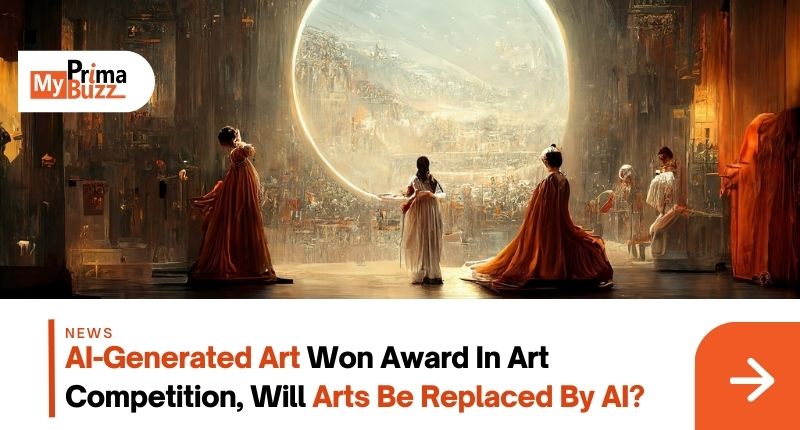Jason M. Allen‘s work “Théâtre D`opéra Spatial” won a blue ribbon in the Colorado State Fair's annual art competition. It was one of the first of his AI-generated art to win such an award, and a bitter backlash from artists who essentially accused him of cheating.
Controversy Over Winning of AI-Generated Art

In the Fair's annual art competition, Jason M. Allen of Pueblo West, Colorado didn't use a brush or a lump of clay to enter. He created his piece using Midjourney, an artificial intelligence program that transforms lines of text into surreal graphics.
Reached by phone on Wednesday, Allen defended his work which was submitted under the name “Jason M. Allen via Midjourney”, was created using AI and clarified that he hadn't deceived anyone about its origins. “I’m not going to apologize for it,” he said. “I won, and I didn’t break any rules.”
AI-generated art has been around for years. But with tools released this year (named DALL-E 2, Midjourney, Stable Diffusion, etc.), amateurs can simply type a few words into a text box to create complex, abstract, or photographic images, creating realistic works.
These apps have, understandably, made many human artists nervous about their future. Why pay for art when you can create it yourself? Also, resistance from those who argue that these apps are inherently a high-tech form of plagiarism and the ethics of AI-generated art which has sparked fierce debate.

Allen, 39, began experimenting with AI-generated art earlier this year. He runs a studio called Incarnate Games where he makes tabletop games, and he want to know how the new generation of AI image generators would compare with the human artists whose works he commissioned.
This summer he was invited to a Discord chat server where he was testing Midjourney, which converts text into custom images using a complex process called “diffusion.” A user enters a series of words in a message to his Midjourney. After a few seconds, the bot spits out the image.
Allen fell in love with it, creating hundreds of images and marveling at its realism. No matter what he put in, Midjourney seemed to be able to pull it off.
After winning, Allen posted a photo of the winning entry on his Midjourney Discord chat. It took to Twitter and sparked an angry backlash where some twitter user wrote “We are watching the death of art unfold before our eyes,” wrote one Twitter user. “This is so gross,” another wrote. “I can see how AI art can be beneficial, but claiming you’re an artist by generating one? Absolutely not.”
Mr. Allen also defended by some artists. They believe that creating AI work is the same as using Photoshop or other digital imaging tools, and that it still takes a human creativity to find the right prompts to create award-winning work.
Controversy over new techniques in art production is nothing new. Many artists kept their mouths shut, seeing the invention of the camera as degrading human artistry. As a new generation of AI emerge, some critics believe no other tool can create beautiful works of art with minimal effort.
Blue Ribbon winner Allen said AI tools would put them out of work and he empathized with them. But their anger shouldn't be directed at individuals using DALL-E 2 or Midjourney to create art, but at companies that chose to replace human artists with AI tools.

